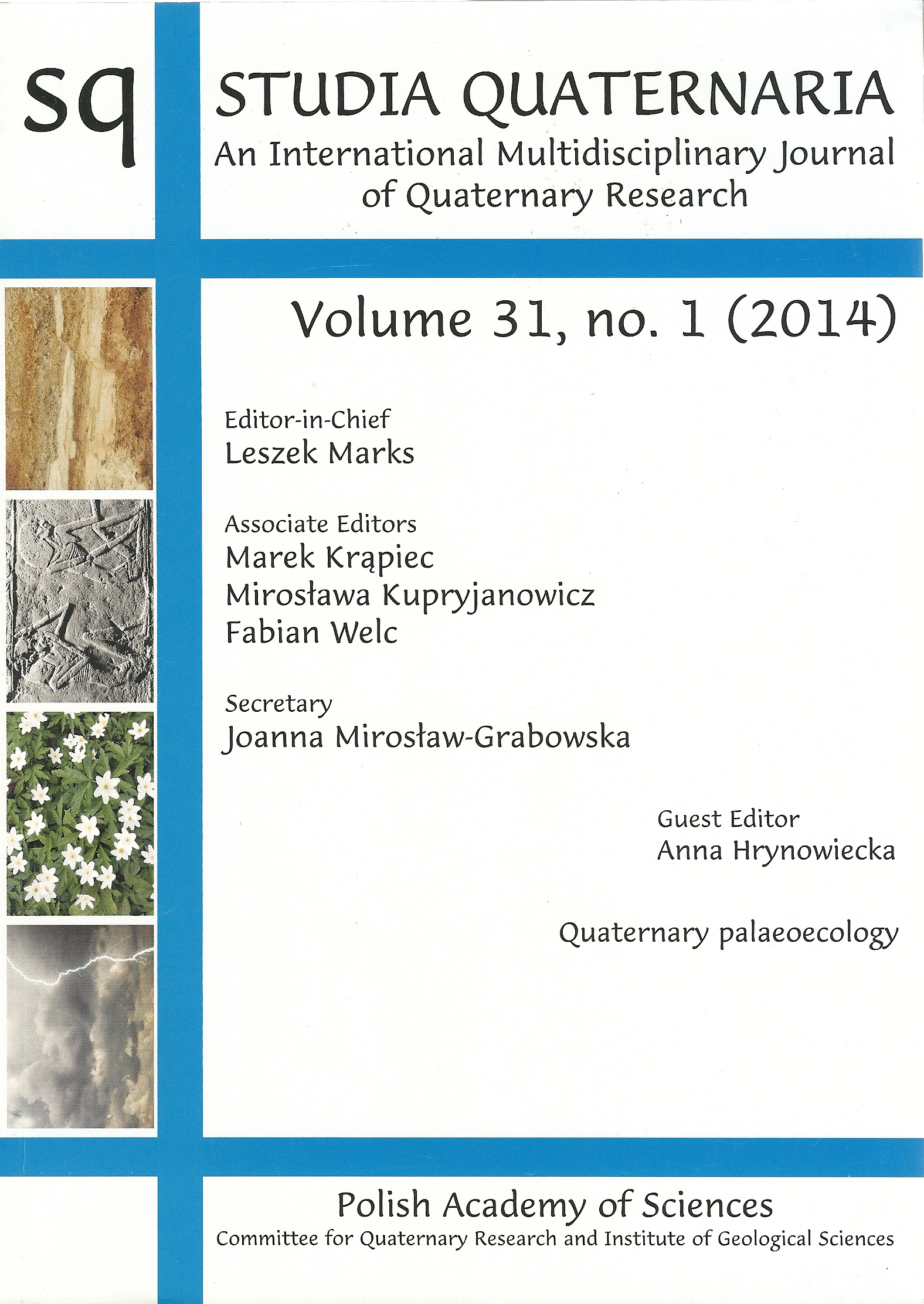
 |
STUDIA QUATERNARIA | |
 Journal Editors History Subscription Statement Articles Current Issue Archives In press For authors Instruction For reviewers Instruction Reviewers (2013 - |
Instruction (in pdf ) Studia
Quaternaria calls for the submission of research papers, review papers and
brief reports on all the topics of the Quaternary science. Papers should not
exceed 15,000 words, brief reports to 2,000 words.
Text should be written in English, in Word format (preferably), Times New Roman and double-spaced. The first page of manuscript should include the title of the paper, full names with full postal and e-mail addresses of all authors (please clearly indicate corresponding author by *), 3-5 keywords, and an abstract (to 200 words). The text should be subdivided into sections (for example: Introduction, Regional setting, Material and methods, Results, Discussion, Conclusions, Acknowledgements). Do not use word hyphenation in the manuscript. Reference list, figure and table captions should be enclosed after the main body of the text. Only metric units and Arabic numerals should be used. Latin words and abbreviations should be typed with italic characters (this does not concern biological taxonomic units when higher than genera). References References
should be cited as: Charman (2007), (Leng and Marshall, 2004) or (Magny et al.,
2008) if more than two authors are involved. When appropriate, please
distinguish references with letters, e.g. (Ramrath et al., 1998a, 1999b). The
references should be listed in the following way: Charman,
D.J., 2007. Summer water deficit variability controls on peatland water-table
changes: implications for Holocene palaeoclimate reconstructions. The Holocene
17, 217–227. Leng, M.J.,
Marshall, J.D., 2004. Palaeoclimate interpretation of stable isotope data from
lake sediment archives. Quaternary Science Reviews 23, 811-831. Berglund,
B.E., Ralska-Jasiewiczowa, M., 1986. Pollen analysis. In Berglund, B.E. (ed.)
Handbook of Holocene Palaeoecology and Palaeohydrology, 455–484, John Wiley
& Sons, Chichester – New York – Brisbane – Toronto – Singapore. For paper
not published in English, German or French, but having a summary in one of the
languages above, the title of its summary should be given. If this is not the
case, the original title must be preceded by its English translation. In all
cases, the language of original paper should be stated e.g.: Alexandrowicz,
W.P., 2007. Malacofauna of Late Glacial and Holocene calcareous lake deposits
in North Poland. Geologia Kwartalnik AGH 33, 395–420 (in Polish with English
summary). Choiński,
A., 2007. Catalogue of Polish lakes (Katalog jezior Polski). Uniwersytet
Adama Mickiewicza, Poznań (in Polish). Original
bibliographic data and names in Cyrillic alphabet should be transcribed in
Latin characters. Artwork Figures
should be numbered consecutively in Arabic numerals, and each one must be
referred to in the text. All parts of composite figures should have identifying
Latin capital letters. The text on graphs should be clear and easily readable,
please use uniform lettering and sizing (minimum font size 7 pts.) of your
original artwork. The use of sans serif typefaces, such as Arial or Helvetica,
is recommended. All description should be inserted on the graphs. The preferred
figure size should be close to the printed version i.e. a width 84 or 174 mm,
with maximum size 174 × 240 mm. Reproduction of larger figures can be
negotiated individually. The preferable format of graphs is Corel Draw (max.
X3) with minimum line thickness 0.1 mm, minimum gray tone 15–20% Black (CMYK);
eventual color figures in CMYK. Black-and-white
photographs (600 dpi grayscale, tif) of good contrast and color ones (minimum
300 dpi RGB, tif) are also accepted. All photographs should be close to a
printed size and numbered as figures. Reproduction of color figures and
photographs is payable in general. The figures
should be sent in separate files each. Tables Tables
should be numbered consecutively in accordance with their appearance in the
text. Word or Excel format is accepted and table maximum size is one page. Font
size 7-8 pts. |